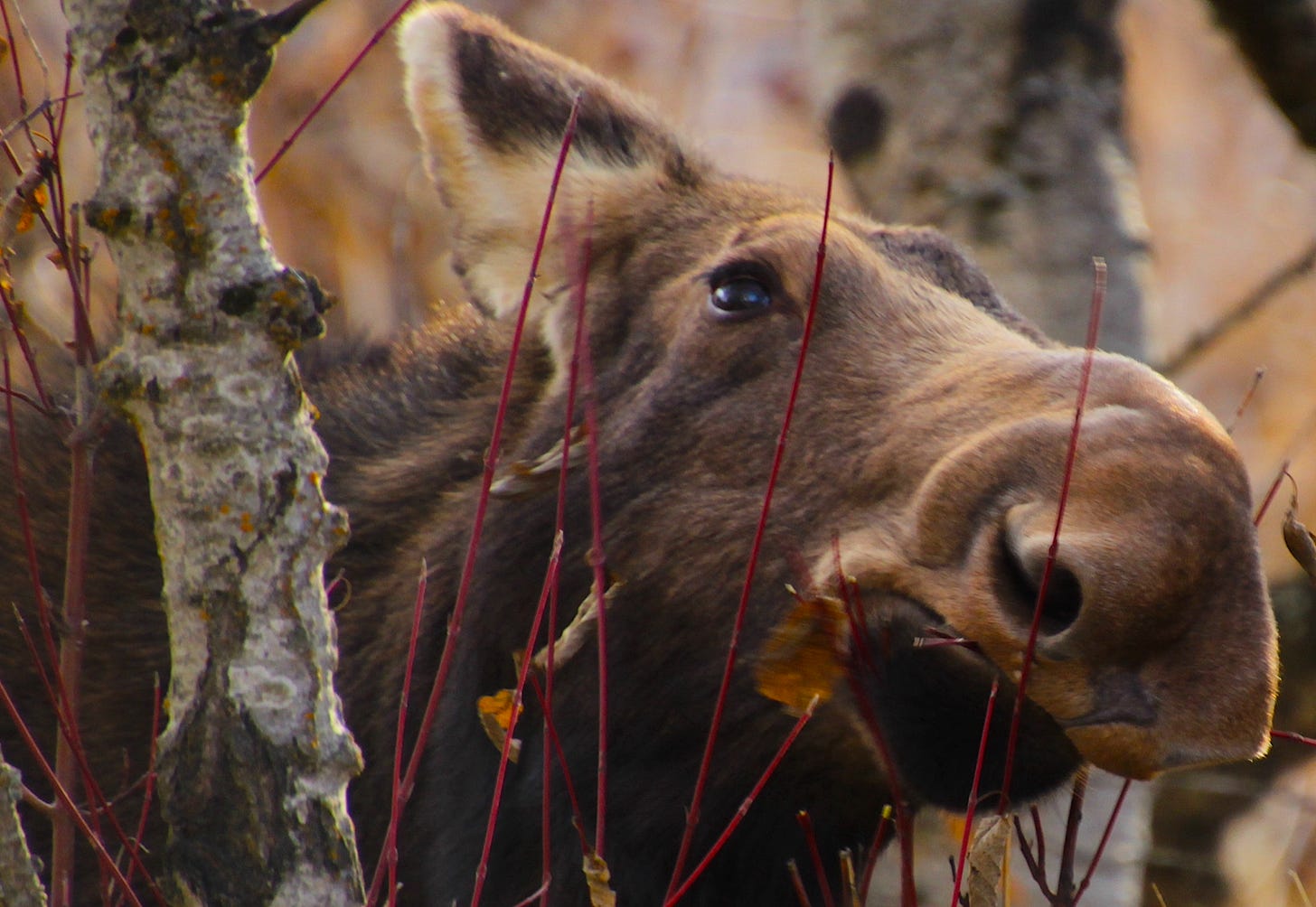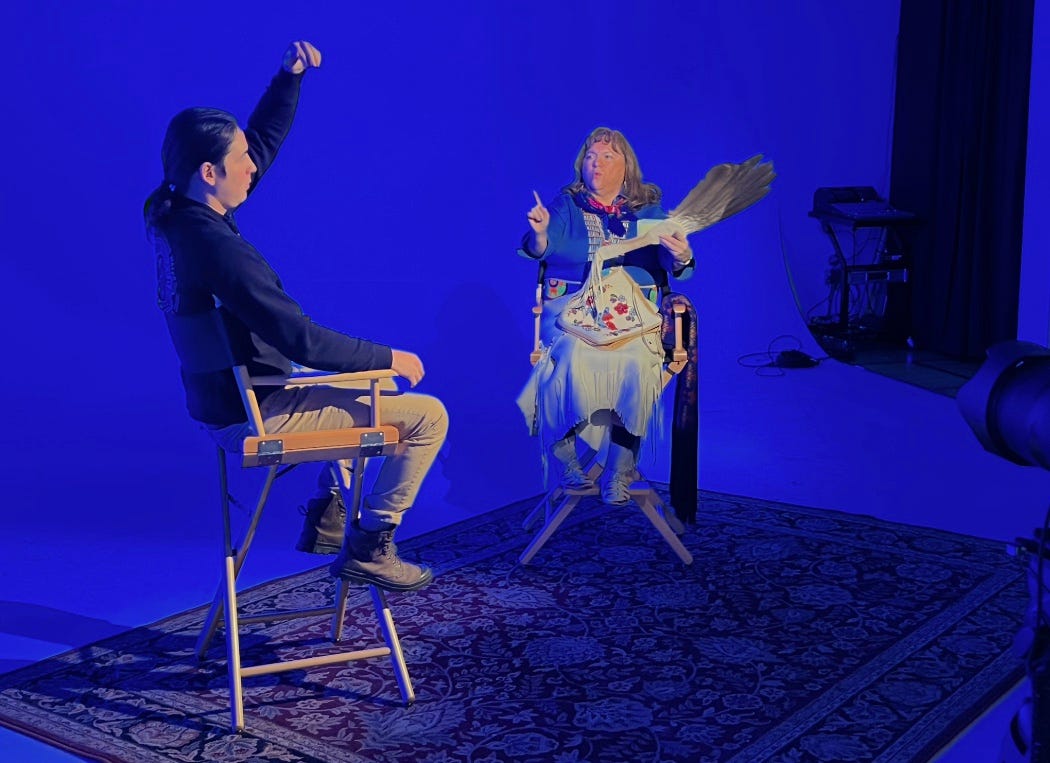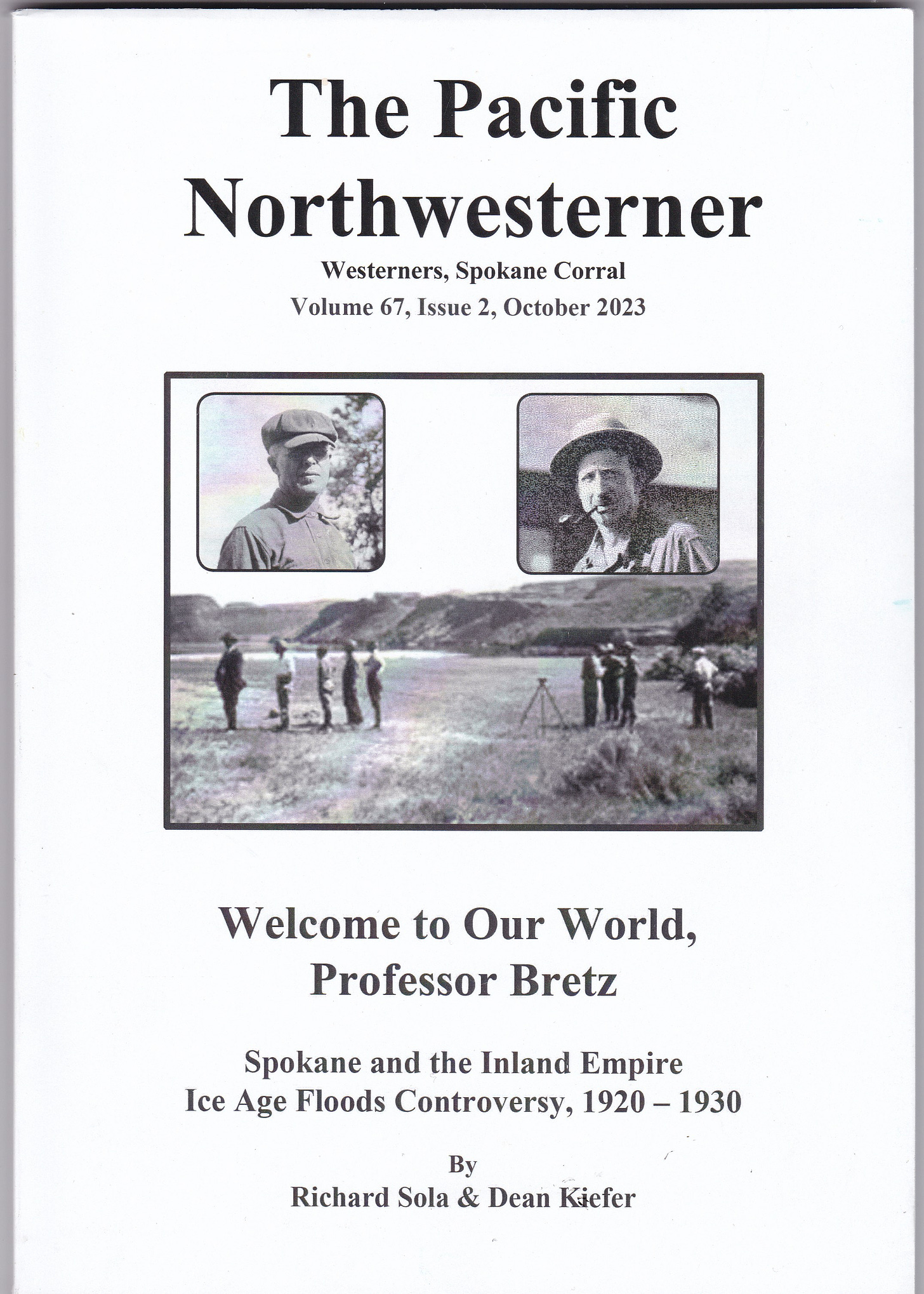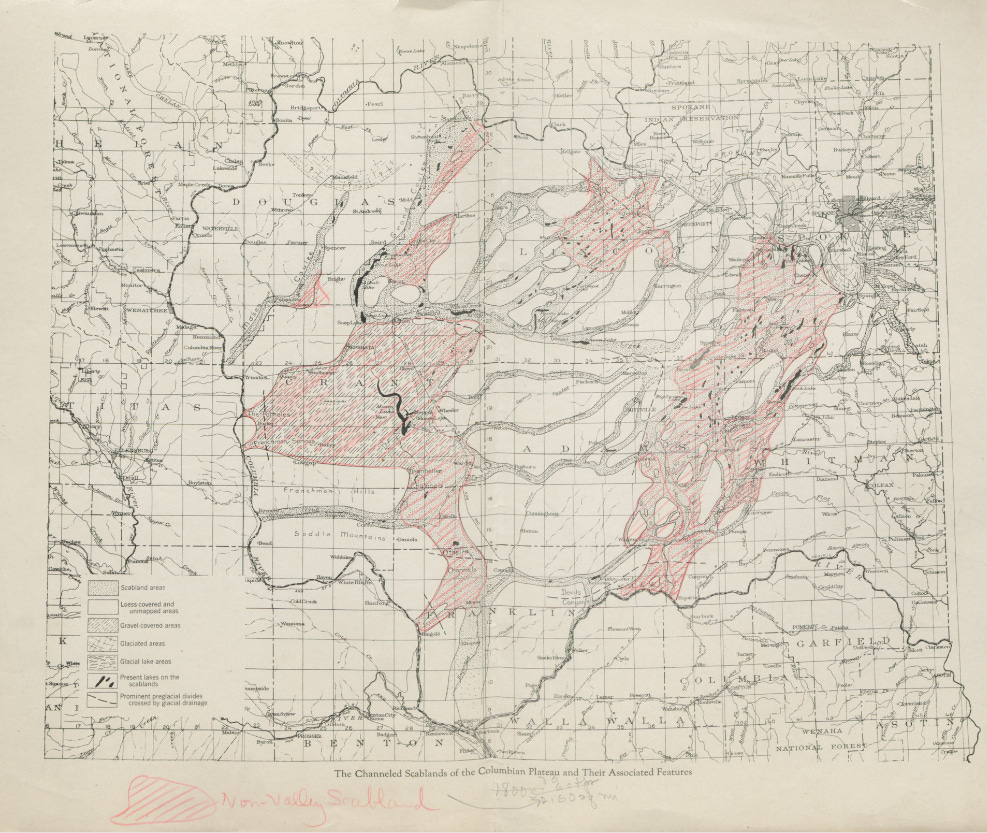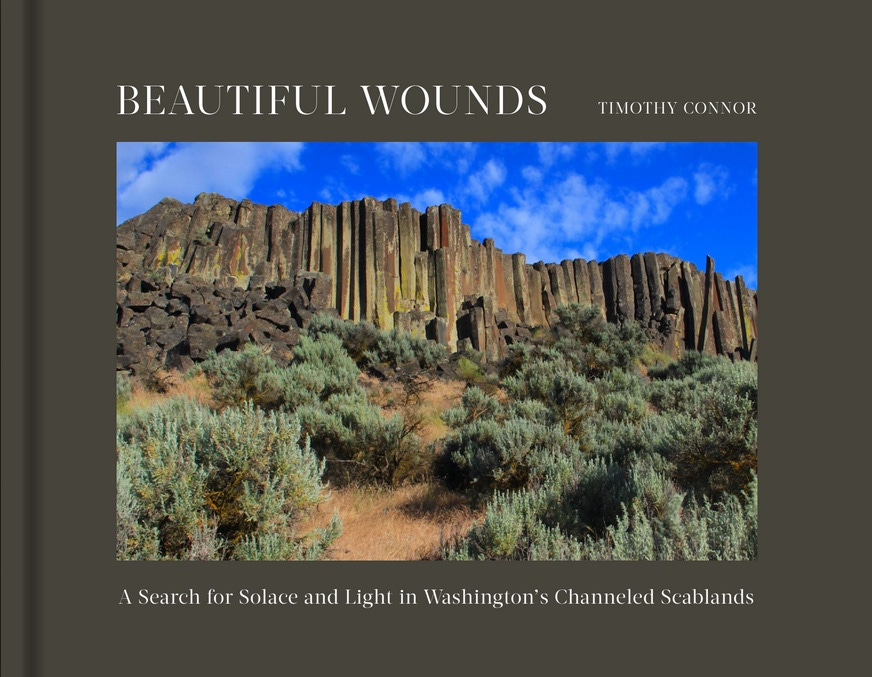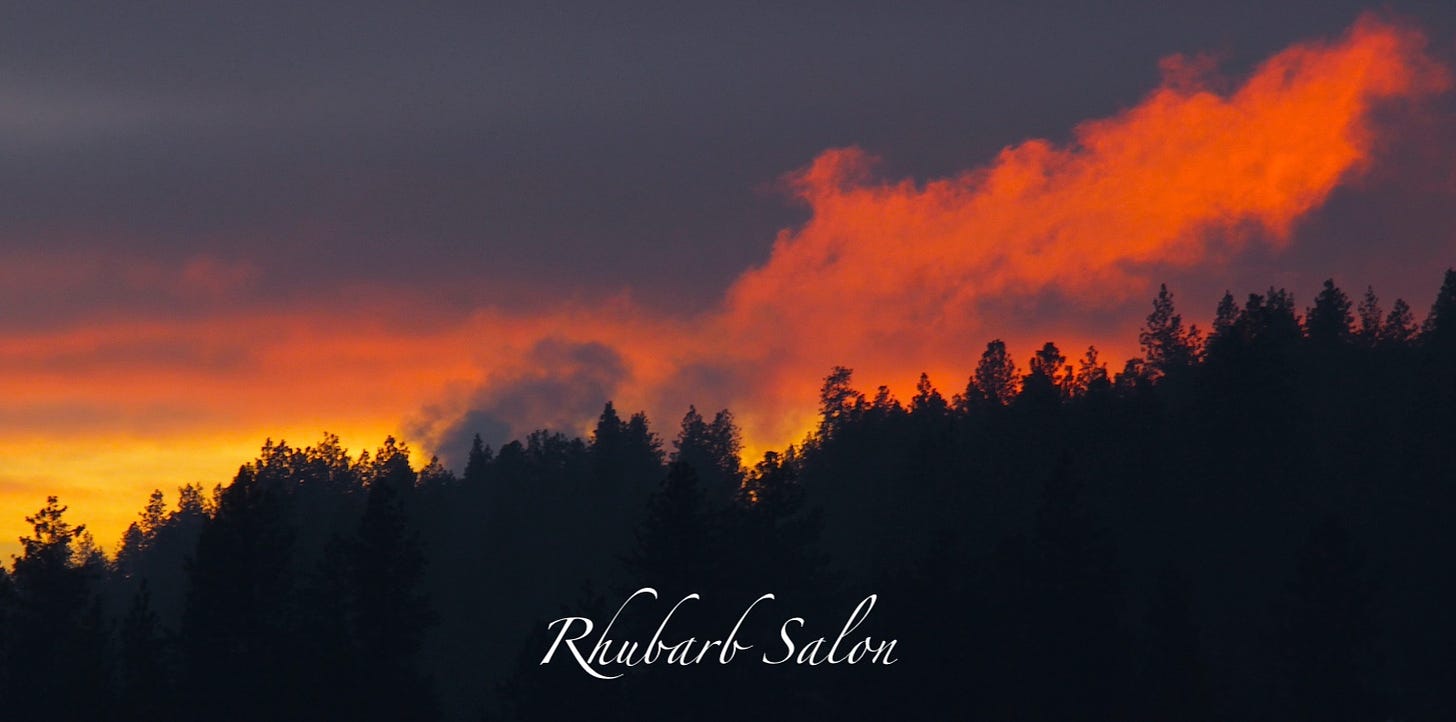Moose munching on red osier dogwood at the Turnbull National Wildlife Refuge
It may seem that after doing my Beautiful Wounds basalt, badger, rabbitbrush & mule deer show for the past year a half that I’m all talked out about the great Ice Age floods. That’s somewhat true. But when Don Hamilton invited me to bring my floodscape photography to Hamilton Studio in early February (five weeks from now) he prodded me to think outside my box and incorporate more angles and voices into the story telling.
That led me to Margo Hill and Dean Kiefer.
I just happened to be in the Montvale Event Center a few weeks ago when Margo shared the Spokane flood story from her Native American perspective, with the story passed down from her great-grandmother Sadie Boyd. It was mesmerizing, so I invited Margo to share it, which she did on Friday, along with her son Craig who is a language and cultural curator for the Spokane Tribe. It’s a beautiful and powerful presentation that we captured in the studio, on video
Craig and Margo Hill at the Hamilton Studio Friday afternoon.
I met Dean last spring at an event hosted by Chad Pritchard, the chair of the EWU Geology department. Chad let me know that Dean was working on a history project focusing on the role that Spokane educators played, a century ago, in hosting the famous scablands geologist J Harlen Bretz. It was Bretz, of course, who stunned the nation’s geologic priesthood in the 1920s by proposing that a catastrophic flood had carved out Grand Coulee and other dramatic features on the Columbia plateau.
In October Dean and his colleague Richard Sola published a lengthy article—Welcome to Our World, Professor Bretz—that is a major addition to the Bretz story and legend. It’s worth the wait for that alone. In most treatments—including the 2005 NOVA documentary Mystery of the Megaflood—Bretz comes across as a lone explorer and renegade scientist. There’s something to that. But what Dean and Richard found and documented is the remarkable support-structure that a cadre of Spokane educators and civic leaders offered Bretz in the 1920s and beyond. They hosted him during the summers of 1922 and 1923 as he worked on his famous paper Channeled Scablands of the Columbia Plateau. But they also supported him in the years that followed as Bretz came under withering attack from the East-coast based geologic establishment for proposing such an outlandish theory.
What the Kiefer-Sola paper makes clear is this didn’t come out of nowhere. Spokane had a cadre of educators primed in the Earth sciences (including much of the science faculty at Lewis & Clark High School) who were among the finest in the nation at that time. They welcomed Bretz with the reasonable hope that his work would verify their ideas about a great Ice Age flood shaping Spokane and areas to the west and south. It’s a remarkable story, one that makes me prouder of my adopted hometown which—for most of the 20th century—was mocked for its civic insularity and insecurities.
In short, Friday was pretty rich. I got to listen in while Margo and Craig shared the Spokane legend and then dive into a long, recorded interview with Dean about the Bretz in Spokane story he and Richard have so meticulously researched.
So much of “old Spokane” is about railroads, mines, a polluted river, and the often violent conflict between the capitalists and the labor movement that Jess Walter captures in his 2020 novel The Cold Millions. All that’s true enough. But the Bretz story is a window into a time when the city was making progressive strides in education generally and the sciences especially. It’s a great story and deserves its own chapter.
Working version of the famous Bretz map of the Channeled Scablands that was included in his 1923 paper. Spokane is in the upper right hand corner. (Courtesy of the Hanna Holburn Gray Special Collections Research Center, University of Chicago.)
It dawned on me a few hours after our session that there is an elegant thread connecting the Spokane legend with Bretz’s field work. The great ice age flood was real, and the accumulating evidence of multiple, late Pleistocene floods occurring in the more recent past (~18,000 to ~12,000 years ago) squares with the Spokane oral legend that Sadie Boyd shared with her descendants, to which Margo and Craig give voice.
As Dean noted in during our interview, a largely unspoken motive for the pushback against Bretz’s great flood theory is that it sounded too much like the Biblical flood. In the 1920s the mainstream of geologic theory was harnessed to “Uniformitarianism”—the theory that the Earth’s surface is shaped by uniform processes over millions of years.
But what Bretz was proposing was “catastrophism”—the opposite. It was heretical in the opposite direction and it wasn’t because Bretz was motivated by biblical Creationism—he was an agnostic; simply reading the landscape. His Spokane hosts were all in for that, and referred to it, with élan, as “the Outrageous Hypothesis.” When the eastern geologists pushed back on Bretz, the Spokane group pushed back on them, inviting them to come visit the landscape that many of the Bretz critics had never seen firsthand. Bretz and the Spokane group were right, and the Geological Society of America finally bestowed it’s highest award—the Penrose Medal—on Bretz in 1979, when he was 96 years old. He passed two years later.
In Sadie Boyd’s story, that Margo and Craig carry, the Ice Age flood that engulfed the Spokane valley as a natural and human catastrophe is the beginning of a creation story, or more accurately, a re-creation story. The legend is that a young woman and young man survived the flood by making it to the high ground of Mt. Spokane. And it is their progeny who became the lower, middle and upper Spokanes, given new life and new generations as the salmon and steelhead returned to the Spokane River and its tributaries after the calamity.
It’s a powerful story, eloquently delivered, and I’ll hope to share it with you early next year.
One final thought and advertisement. I almost always begin my Xmas shopping at Kizuri, Spokane’s wonderful fair trade store on the ground level at The Community Building on Main Avenue across from The Main Market. If you’re reading this before 3 p.m. on Christmas eve there’s still time to visit the store and peruse its fine wares and artwork. You can also find Beautiful Wounds which Jillian & Company have given a prominent corner display in the back, near the storefront window.
Seasons greetings to all.
—tjc





